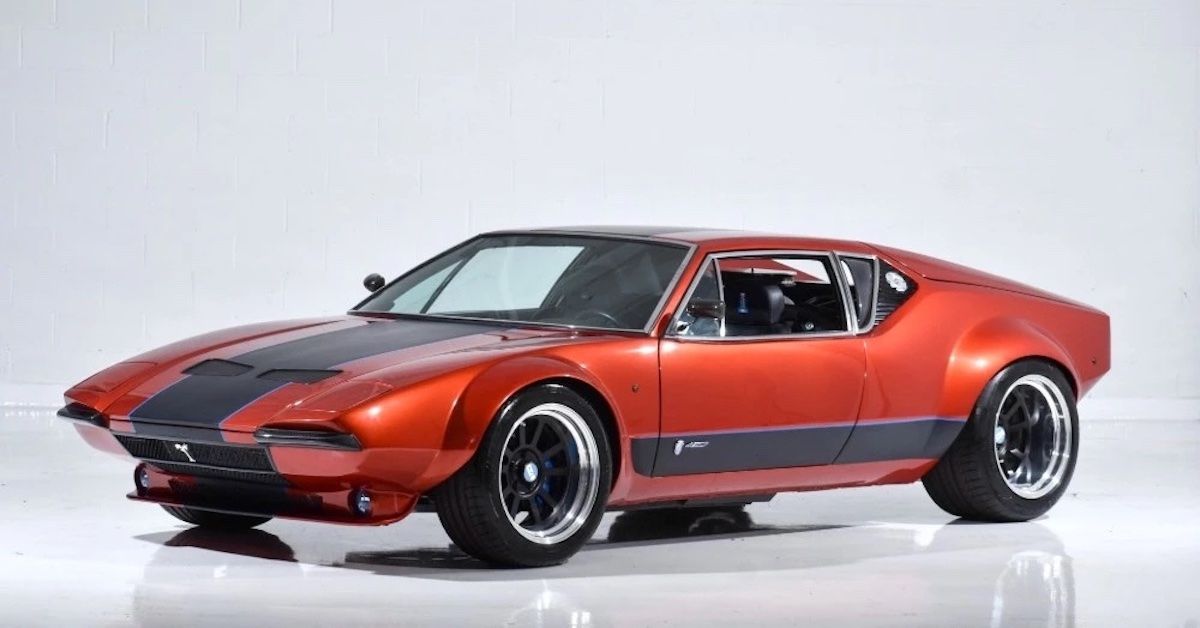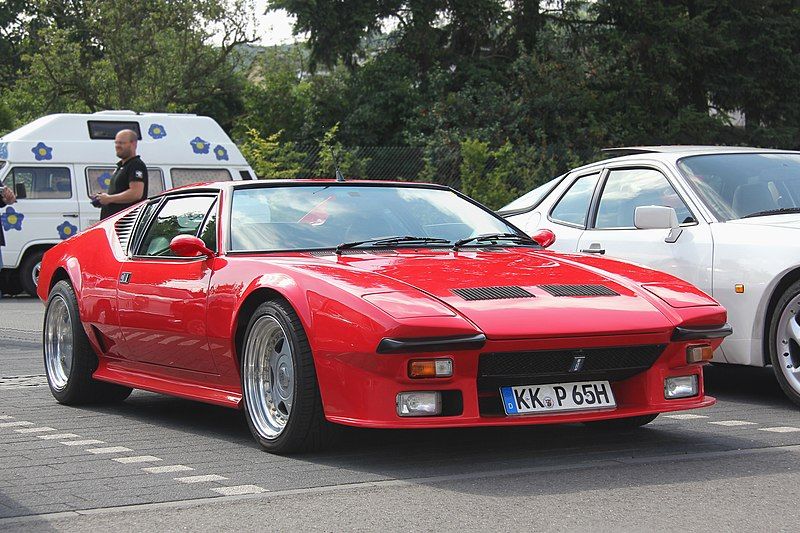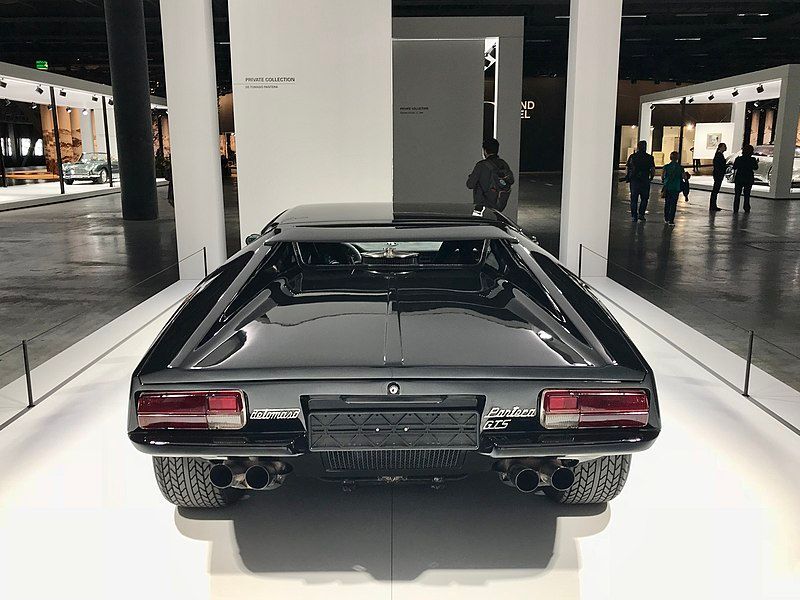The De Tomaso Pantera reminds you of the AMC AMX/3 because it is, in fact, the classic car that inspired the Giotto Bizzarrini-designed AMX III. AMC followed the chimera design approach of the Pantera by having the AMX/3’s body and drivetrain come from its factory and the chassis and suspension developed in Europe. Like the Pantera, AMC had the AMX mass-produced in Germany.
Chrysler’s Lee Iacocca and De Tomaso’s Alessandro developed the Pantera to appeal to markets on both sides of the Atlantic. Like a chimera, it had Italian and American DNA, revealed in its Italian styling and the American cast-iron V8 engine in its belly. De Tomaso Automobili produced the mid-engine Pantera (Italian for Panther) sports car for twenty good years between 1971 and 1992, although just 7,000 got made in that period.
It fared longer than the rival AMX III that got withdrawn soon after its launch with no reason whatsoever given for abandoning the project. A deal with Ford saw America’s Lincoln-Mercury distribute the Pantera through its dealership network between 1972 and 1975, but De Tomaso kept making the car after the deal collapsed, albeit in even smaller quantities until the early 1990s.
A Brief History Of The Pantera
As mentioned earlier, the De Tomaso Pantera has traces of Italian and American automotive DNA all over it. Although the body design is Italian, courtesy of the Italian design powerhouse Carrozzeria Ghia, American automotive designer Tom Tjaarda penned the design during his short stint spanning two years at Ghia.
The Pantera was thus in good hands, considering Tjarrda already demonstrated his design prowess with the Ghia Selene and Innocenti 950 Spider and a few other concepts before moving on to Pininfarina where he penned the design of the Corvette Rondine concept. By the time he died in June 2017, aged 82, Tjaarda had at least 80 automotive designs in his portfolio, including the 2006 Shelby Series 2 and the 2007 Tjaarda Mustang.
Car Design News called the man “one of the great unsung heroes of the car design world,” while Jalopnik described him as “one of the defining automotive designers of the 20th century.” Tjaarda had this to say about his work with the De Tomaso Pantera, “When I was working on this car, I wanted to make sure that when you saw the design, you were certain where the engine was placed and where the power was coming from. That’s why I gave it a powerful haunch look, an animal with strong shoulders.”
The Tjarrda-styled Pantera replaced the 1967–’71 De Tomaso Mangusta, but it utilized a steel monocoque design instead of Mangusta’s steel chassis. It marked the first time the Italian marque would use this construction technique. The Pantera had the right ingredients to become the 5,000-units-a-year production car the marque envisioned. These include a double wishbone suspension, disc brakes, rack & pinion steering, and most importantly a 5.8-liter 351 cu-in Ford Cleveland V8 unit with 330 horsepower.
It possessed a high torque that mitigated the need for excessive shifting at low speeds, making the Pantera more at home in urban areas than many homegrown cars of that era. The interior space also differed from the Mangusta. Tjaarda confirmed he gave it "a much larger seating position” and had the roof raised, and the windshield got “a less steep angle.”
De Tomaso introduced the Pantera in 1970, first in Modena, Italy, and then at the New York Motor Show some weeks later. Lincoln-Mercury dealers moved more than three-quarters of the 7,260 Panteras sold in twenty years, with production increased to three per day. De Tomaso retained the distribution rights of the Pantera in Europe.
The Ford-De Tomaso Partnership And The Pantera In America
Ford struck a partnership deal with De Tomaso to sell the Pantera in the U.S. via its Lincoln-Mercury dealer network. A thousand and seven Panteras got to the US market via Ford in 1971. The first 75 units arrived as purely European imports, infamous for their hand-built Carrozerria Vignale bodies and pushbutton door handles.
However, the Pantera did not remain 'untouched' imports for long as Ford got increasingly involved in the Pantera’s production process due to the poor finish and rusting endemic with most Italian cars of that era. Road & Track described it in its 1971 issue as “Exciting-but not a finished product.” Even Alessandro De Tomaso himself admitted the car could be better, but not without setting the American customer back at least $10,000, the equivalent of $70,000 in today’s money.
In fact, Ford fielded a recall due to issues affecting the fiberglass fuel tank, rear sub-frames, and air conditioning. Subsequently, later Panteras got improved overall quality, thanks to the Blue Oval’s insistence on precision stamping – eliminating the numerous soldering that maxed panel flaws – and overall quality improvements. The Pantera got strategic modifications to its powerplant in 1972, comprising a lower compression 351 cu-in 4-bolt main-bearing Cleveland V8.
The Pantera killed two birds with one stone as the compression lowered to 8.6:1 from 11:1 met US emissions regulations and required lower octane fuel. At the same time, the more aggressive "Cobra Jet" camshaft, with the same lift and duration as the 1st-gen Ford Mustang’s 428 Cobra Jet's factory performance cam, helped the Pantera recoup some of the power lost to the reduced compression. The Pantera got numerous other powerplant mods, including factory exhaust manifold headers.
The 1973 Pantera L “Lusso" was the luxury version, but with less power. Meanwhile, Americans soon eyed the European GTS model, resulting in some grey market imports and even available performance parts. Ford soon caved in and introduced a US version of the Pantera GTS in 1974 but without the higher compression engine, wheels, and other performance specifications of the European GTS.
The De Tomaso-Ford partnership ended in 1975 after selling 5,500 Panteras in America. Interestingly, De Tomaso continued building ever-higher-performance and luxury Pantera models, although some arrived in America via the gray market route, notably, the GT5-S AmeriSport. When Ford stopped making the Cleveland V8 in 1974, De Tomaso turned to Australia for the Pantera’s engine with power outputs up to 355 horsepower.



